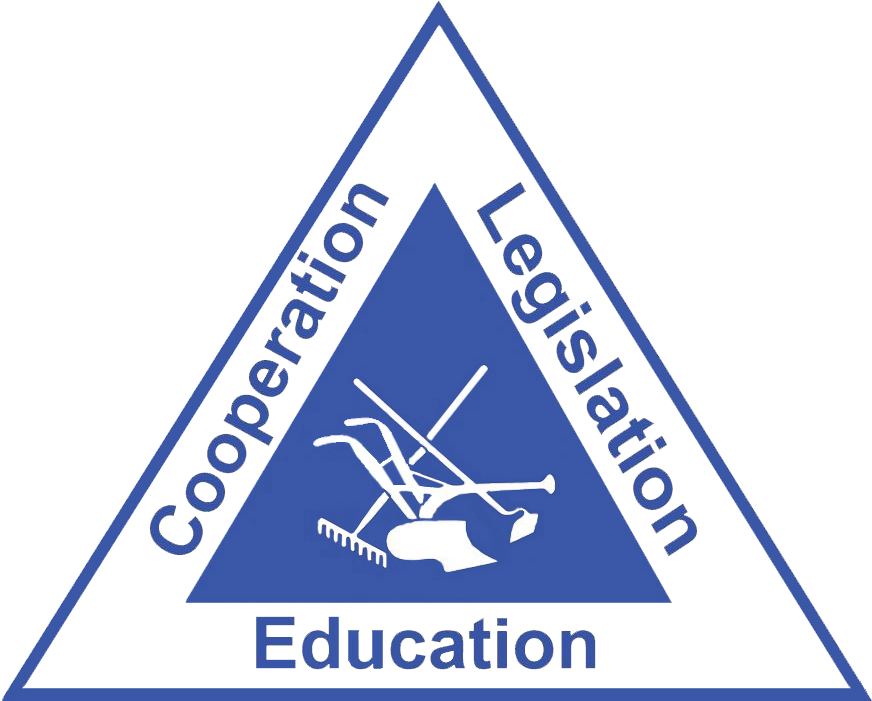 By Kiana Brockel, NFU Intern, & Tom Driscoll, Director of NFU Foundation and Conservation Policy
By Kiana Brockel, NFU Intern, & Tom Driscoll, Director of NFU Foundation and Conservation Policy
Regular Climate Column readers know that there are many actions farmers can take to mitigate the effects of climate change. There is no one-size-fits-all solution however – the appropriate approach depends on location and its climate, topography, crops grown, and resources available, among other factors. Farmers and ranchers who aren’t sure which conservation practices to implement can look to the U.S. Department of Agriculture (USDA) Natural Resources Conservation Service (NRCS), which sets conservation priorities at the state level. Farmers in each state have enhanced access to support for practices and management decisions that work toward those goals.
Arkansas is the third-largest cotton producing state in the nation, meaning the crop is vital to the state’s economy. But as the climate continues to change, cotton’s importance to Arkansas’ economy may change. Rising CO2 levels will likely cause the rate of photosynthesis to increase, but that may not result in higher yields. Warmer-than-average temperatures, combined with changes to precipitation patterns, may negatively impact the temperature-sensitive crop. Farmers will likely need to rely more heavily on irrigation becomes more necessary to compensate for irregular precipitation. Cotton production may be forced to move to northern regions, which will more suitable for production in the event of temperature spikes.
In Arkansas, NRCS has identified reducing inputs as a conservation priority. Arkansas farmers can reduce inputs, and thus mitigate climate change, by establishing a conservation rotation to bolster their cotton crop. But as with so many climate-smart practices, the challenge is to do so without losing too much income from the cash crop. A good crop to add to a cotton-focused rotation is grain sorghum, which can be used in livestock feed. Of the 29 mills with approval to incorporate medication into their feed in Arkansas, at least 16 are clearly owned by multinational conglomerates; these mills require enormous volumes of uniform product and are less likely to consider conservation crop rotations when purchasing grain to make into feed. To enhance marketing opportunities for grain resulting from a conservation rotation, farmers may want to consider establishing their own mill to achieve that goal.
Farmers looking to add sorghum to their crop rotation should pursue the pet food industry to market their grain. The pet food industry is a multi-billion-dollar market, consistently searching for alternative ingredients. Studies are already underway to determine the efficacy of sorghum as a primary carbohydrate in dry cat food. Animals, however, are not the only ones who could benefit from increased sorghum production. The nutrient-dense crop is a good source of dietary fiber and antioxidants in human diets as well.
Implementing infrastructure that facilitates sorghum marketing, however, may be difficult to finance. Rural communities and smaller agricultural businesses are frequently not well-served by commercial lenders. USDA’s Rural Development (RD) agency makes Business & Industry Loan Guarantees to help commercial lenders mitigate risk when lending for such purposes. Farmers can work together with interested lenders and approach RD in their state, at any time, to secure a guarantee on financing offered to the rural business. RD has authority to guarantee loans up to $25 million; guarantee terms vary according to whether the loan is used to purchase real estate, machinery and equipment, or working capital.
Have you discussed business opportunities for climate-smart farm products only to find it’s too great a risk for your lender? Would you like to see more outlets for the products of climate-smart farming in your area? Farmers can come together with farm organizations to see the process of climate-smart agriculture from implementation of beneficial practices all the way through marketing the resulting products. Stay tuned in future week as we discuss state-by-state conservation goals and opportunities.
Like what you’ve read? Check out our Climate Leaders home page, join the conversation in the NFU Climate Leaders Facebook Group, and keep up-to-date with NFU climate action by signing up for the mailing list.

